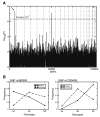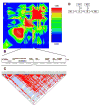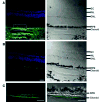Complement factor H polymorphism in age-related macular degeneration
- PMID: 15761122
- PMCID: PMC1512523
- DOI: 10.1126/science.1109557
Complement factor H polymorphism in age-related macular degeneration
Abstract
Age-related macular degeneration (AMD) is a major cause of blindness in the elderly. We report a genome-wide screen of 96 cases and 50 controls for polymorphisms associated with AMD. Among 116,204 single-nucleotide polymorphisms genotyped, an intronic and common variant in the complement factor H gene (CFH) is strongly associated with AMD (nominal P value <10(-7)). In individuals homozygous for the risk allele, the likelihood of AMD is increased by a factor of 7.4 (95% confidence interval 2.9 to 19). Resequencing revealed a polymorphism in linkage disequilibrium with the risk allele representing a tyrosine-histidine change at amino acid 402. This polymorphism is in a region of CFH that binds heparin and C-reactive protein. The CFH gene is located on chromosome 1 in a region repeatedly linked to AMD in family-based studies.
Figures



Comment in
-
Genetics. Was the Human Genome Project worth the effort?Science. 2005 Apr 15;308(5720):362-4. doi: 10.1126/science.1111655. Epub 2005 Mar 15. Science. 2005. PMID: 15769856 Free PMC article. No abstract available.
References
Publication types
MeSH terms
Substances
Grants and funding
LinkOut - more resources
Full Text Sources
Other Literature Sources
Medical
Molecular Biology Databases
Research Materials
Miscellaneous

